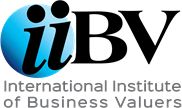At its simplest, the security market line is a straight-line graphical representation of the capital asset pricing model (CAPM). The formula for CAPM is:
R_p=RFR+β x (R_m-RFR)
In the above formula, Rp is the portfolio return, RFR is the risk-free rate, β is Beta and Rm is the market return. The function Rm – RFR in brackets above is commonly known as the equity risk premium or ERP.
We know that any straight line can be denoted by the formula: In this formula the y-axis is the rate of return and the x-axis denotes the multiple of Beta.
The function b is the y intercept, which is the risk-free rate. The m function is the gradient of the line. This gradient is the ERP.
We know that when x equals 2 the value of y is the risk-free rate plus twice the equity risk premium.
The concept behind CAPM is that the required returns reflect the systemic or systematic risk within the market. There is not one level of systematic risk within the market. The systematic risk changes in accordance with the different market sectors. The concept is that the systematic risk for utility companies is lower than that for the discretionary retail sector.
The visual representation of CAPM in graphical form then means that investments can be plotted on the graph: investments which are above the line are under-priced and those that are below the line are over-priced. It must be remembered that this is considering only the systematic risk within the investment. The unsystematic risk has been assumed not to exist
The foundation for the workings of the capital markets is based on a simplified economy in which there are only two assets: there is the risk-free investment and there is the entirety of the free-market economy. This entirety is made up of sole traders, partnerships, private limited companies and public companies. These are all able to accept external investment.
The investor constructs a portfolio comprised of the chosen blend of the risk-free asset and a slice of the entire free-market economy. She increases her risk by reducing the investment in the risk-free asset. She can then increase her risk further by borrowing at the risk-free rate and investing those borrowed funds in a greater slice of the free-market economy.
This model was then developed so that it could be applied to individual investments. This required the inclusion of the Beta factor for the relative volatility of investments compared to that whole free-market.
The intellectual underpinning to CAPM is:
- There is a minimum rate of return as provided by the riskless asset in the economy;
- Any other investment involves risk. The investor needs to be rewarded with a higher rate of return for taking on that higher risk;
- A valid measure of risk is relative volatility;
- That volatility is calibrated by reference to the whole market;
- The whole market has a required return of the risk-free rate plus the equity risk premium;
- That equity risk premium is then moderated by the relative volatility of the sector;
- The relative volatility is described as Beta (β), the second letter in the Greek alphabet
The S&P 500, the Nikkei, the FTSE All Share or the other relevant country main index normally stands as proxy for the whole market.
The measurement of Beta involves challenges: its purpose is to measure the increased systematic risk within market sectors. Those sectors are made up of companies which experience both systematic and unsystematic risk. There is therefore an implicit assumption that the unsystematic risk within the various companies in any sector index effectively offset one another.
The CAPM can be readily re-arranged to give the Treynor ratio. This is a constant regardless of the Beta of the industry sector. The Treynor ratio is:
(R_p-RFR)/β= R_m-RFR
This is used as a simple tool by some fund managers to consider the pricing of stocks relative to the systematic risk.
As an example, if the risk-free rate is 2% and the market return is 7%, the Treynor ratio is 5% for all values of Beta.
The Sharpe ratio is an alternative means of considering relative performance. The Sharpe ratio is:
(Stock return-benchmark return) / (volatility of excess returns)
As with other formulae involving volatility, it is important to express the Sharpe ratio on a standard annualised basis. This is because the numerator moves in accordance with time but the denominator moves with the square root of time.
The Sharpe ratio differs from the Treynor ratio as it embraces both systematic and unsystematic returns. As it derives from CAPM, the Treynor ratio is focused only on the systematic risks within a portfolio.
The security market line is often accompanied by the Markowitz efficient frontier “bullet”. This efficient frontier assumes that there is no risk-free asset. Once a risk-free asset is included, the security market line denotes the most efficient portfolio. The tangent of the Markowitz efficient frontier and the security market line represents the optimum portfolio under both assumptions.

